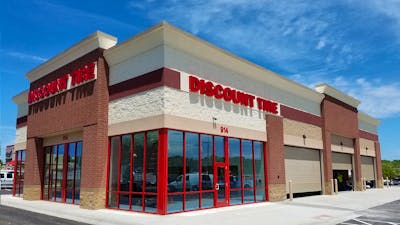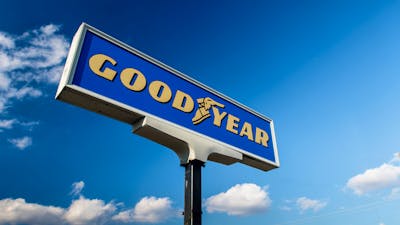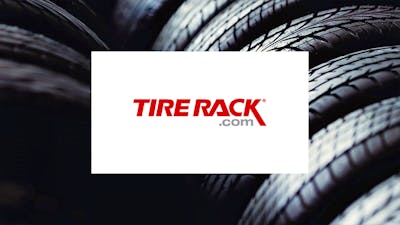Best Used Tire Alternatives
We’re going to put this right at the top so there’s no confusion: Do not buy used tires. Just don't do it. It is not a good idea.
Sure, you can argue all day long about how used tires are cheaper, they might have a lot of life left in them, or that people are throwing them away too soon, but we don’t see a reliable method of testing the safety of a used tire, other than a cursory visual inspection.
Get the Best Deals on Tires
Tire manufacturers spend millions of dollars testing the safety of their products when they’re new. When they’ve been mounted on some random guy or gal’s car for 20,000 miles, you have no idea what kind of abuse they’ve been subjected to.
In our opinion, a much wiser choice than used tires are cheap, but safety-tested, new tires. Don’t buy Michelins or Pirellis if you’re trying to save money. Look for a tire with at least 40k miles warranty and that has been UTQG-rated. That’s the Uniform Tire Quality Grading, and look for a tire where the UTQG rating has a number of at least “500” and ends in “A A”).
Now you’re ready to find a deal. Check out these online tire stores, where you can punch in your car model (or tire size) and see prices:
- New tires at SimpleTire (options under $100)
- New tires at TireRack (options under $100)
- New tires at Discount Tire (options under $100)
Buy Tires Online and Save
Great prices, wide selection and unmatched convenience
Pros and Cons of Used Tires
- Cheap
- You might die
- Your family might join you
- So might the others driving around you
Here’s our completely anecdotal experience with used tires:
In 1999, I bought a set of perfect Uniroyal Royal Seal tires from a swap meet. They were still wrapped in the original shipping plastic, and still had blue dye on the whitewalls. I had them mounted and they looked amazing. I paid about half what a new set of tires would’ve cost.
About a month after having them mounted, I merged onto 495 south in Westboro, Massachusetts, gave it the gas and made my way into the travel lane. I hit about 70 miles per hour and suddenly, the front end of the 4,500 pound station wagon I was driving felt like it was going to shake the car apart.
Seconds later, the right front tire exploded. At highway speed, that tire was nothing but a rubber flap, which tore a foot-long hole in the plastic inner fender well, ripped out the wiring for the turn signals, and tore the trim and mudguard off the wheel well.
A week later, the same exact thing happened in the northbound lane of 495, almost exactly across the highway from where the first tire exploded.
MORAL: Do not buy used tires.
Buy Tires Online and Save
Great prices, wide selection and unmatched convenience
What to Consider When You Need New Tires?
Cost is a major consideration when purchasing a set of tires. They’re definitely not cheap, but they are an absolute necessity and a cost of owning a vehicle.
The only thing keeping you from skating across the highway in a driving rainstorm is the palm-sized patch of rubber that makes contact with the road. Say the difference in cost between used tires and new tires is $100 per tire (SPOILER ALERT: It’s not. It’s often a lot less than $100). If we trust the data about car shoppers, we know that you’ve spent somewhere between 13 and 15 hours searching for cars, you say you care about safety more than anything else, and you spent an average of about $35,000 on your last car.
Yet you’re willing to risk your safety and that of your family to save $400? Are you nuts?
The other thing to note is that some of the bigger “used tire” sites on the internet are just as often presenting you with options for new tires, only they’re from comically awful brands.
For example, we looked up a replacement tire for the 2020 Jeep Gladiator Rubicon on one of the more heavily visited used tire sites. It had no suggestions for used tires. All of the tires were new, which is weird, because the tires on the Gladiator are no different than those on the Wrangler, which has been around forever, and should have tons of used tire availability.
Here are the results we received:
| Tire | Size | Cost |
|---|
Have you ever heard of any of these brands? Anybody know what the history is on a nice set of Leao Lions? Aren’t you brimming with confidence when you slap a set of Accelera Omikrons on your ride?
So who cares, right? You’re trying to save a few hard-earned bucks, why not buy a set of tires made on an assembly line that also makes whoopie cushions and plastic dog turds?
Because you’re not going to save any money in the long run, or the short run, frankly.
For less than $200 per tire, you can buy replacements from Sumitomo, Yokohama, Firestone and Kumho, recognized brands which stand behind their products and have a reputation for quality. The difference in price between a Greenmax Optimum Sport and a Sumitomo Encounter A/T is $42 per tire. That’s less than what you’re spending on lattes in a week.
And what about when it’s time to sell the car? This is a true fact: I have walked away from purchasing a used car because the seller had purchased a new set of these trash tires just before attempting to sell it to me. If this is an indication of the kind of quality maintenance the car has received in the past, I’m not interested in the car at all.
Why Budget Tires are a Much Better Option Than Used Tires
The hierarchy of what you should be mounting on your wheels is as follows:
- Top Quality New Name Brand Tires With Better Performance Characteristics Than Stock
- Decent Quality New Name Brand Tires With Equal Performance Characteristics
- OK Quality New Name Brand Tires With Lower Performance Characteristics
- No-Name New Tires
- Department Store Brand Tires
- Used Tires
Yes, since Sears and Montgomery Ward went out of business, there aren’t really any department store tires left any longer, but you get the picture. Used tires are bottom-rung, and not recommended at all.
If you’re absolutely determined to save that $42 per tire, buying the no-name tire is a better option than the used tire. Why? Many, many reasons:
- Warranty: Yes, you may have never heard of this outfit, and they may also make neckties, but these companies DO offer a warranty. Good luck making a claim against it, but we’ve heard of crazier things happening.
- DOT Regulations: Every new tire sold in the United States is required to have a DOT code showing where the tire was manufactured, the tire size and the manufacturer’s code, along with the week and year the tire was manufactured. Even cheapo tire manufacturers have to comply. It provides you with information about who to track down if one of those tires fails. If a used tire fails, that’s your tough luck.
- Mileage: Who knows how many miles a used tire has turned? There are wear bars in the tread that indicate how much tread is left, but judging how many miles the tires have turned is impossible.
- Age: Tires made after 2000 have a DOT date code that tell you the week and year a tire was manufactured. That’s on a used tire too, if it was made after 2000. (if it wasn’t, run like the wind). But any tire older than about seven years of age is too old to be running around on.
- Number of installations: Ever watch a tire being mounted? It’s a VIOLENT procedure. The tire bead has to be stretched to the limit to squeeze over the wheel rim, and it’s only accomplished by a machine that exerts a massive amount of force on the tire bead. Every single time a tire is mounted and dismounted, it gets weaker. It’s why a set of winter tires that has been mounted and remounted every spring is pretty much ready for the tire pile after about five years.
The Dangers and Pitfalls of Getting Used Tires
The dangers and pitfalls of getting used tires should be fairly obvious. Tires are spinning around hundreds of thousands of times even in just a short trip. In the best of circumstances, temperatures can rise from a cool 35 degrees to well over 100 degrees in a matter of miles. They’re subjected to rain, snow, sleet, salt, and get blasted by UV rays 24 hours a day.
And that’s if the person behind the wheel is the most considerate driver on the road. You’ve seen people driving around. They’re hitting potholes, manhole covers, squeezing past curbs, running over road debris and peeling out at stoplights. Do you want to get that guy’s tires?
Of course the real danger is that the tire can fail at the least opportune moment and send you and your car hurtling into a guardrail at highway speed. In the moment before impact, are you still going to feel like a shrewd household financial genius for saving $42?
Places to Get Budget Friendly Tires Online, Instead of Used
Here’s how to save money on tires produced by companies that you may have heard of:
- SimpleTire: SimpleTire is one of our favorites for online tire purchases. This company is a one-stop-shop for customers looking to find an excellent price on a set of tires, and then schedule installation at a shop of your choice, all at the same time. They have a very wide range of tires to choose from, from all price points, and a very easy website to help match the correct tire with the right vehicle.
- Tire Rack: We love Tire Rack because it essentially eliminates the tire distributor, the middleman in between you and the guy selling tires at the gas station down the street. You’re dealing directly with the people who distribute the tires, and the prices at Tire Rack are very competitive, if not better than what you’ll find at local tire chains. It also makes it very easy to compare prices, which is often hard to do at a local retailer. You can sort prices from low to high. We still wouldn’t recommend buying the cheapest tire, especially if the reviews aren’t great.
- Captive Tire Stores: Companies like Goodyear and Firestone run their own tire stores and often have deals that aren’t available from the local tire chains
- Local Tire Chains: We have nothing against the medium-sized tire retailers that are probably a household name in your area. Especially in less-than-popular sizes, a lot of times, you can spend less money at a local chain than you can at a place like Tire Rack, especially if you factor in the cost of mount and balance.
- Rebates: All of the major tire manufacturers offer rebates throughout the year, sometimes in the form of a “Buy 3, get one free” sale, or sometimes it’s a $75 to $150 rebate in the form of a Visa gift card. Either way, it’s a free tire, and when you average the cost out, it makes buying somebody’s used tire a lot less appealing.
Buy Tires Online and Save
Great prices, wide selection and unmatched convenience
FAQ
FAQ About Used Tires
- Used tires have no way of telling you how they were used before you got them. They’re an unknown quantity.
- The cost between a used tire and a budget tire is negligible.
- Consider either a budget tire from a brand you recognize, or, worst case, a brand you’ve never heard of.













